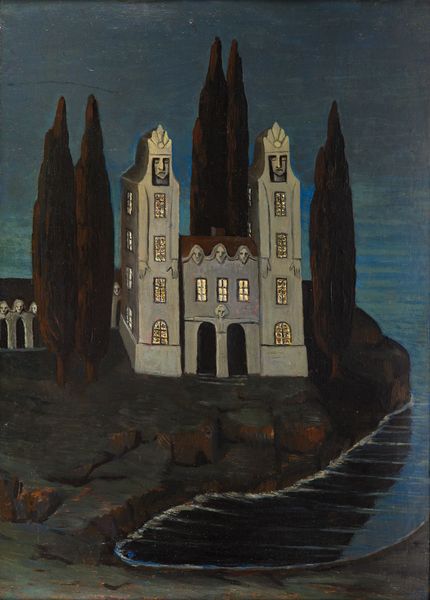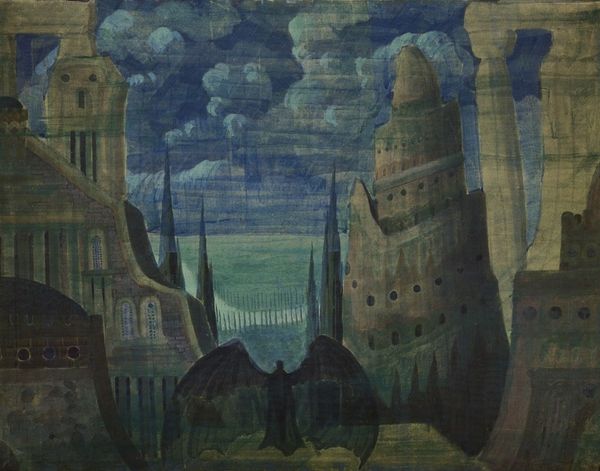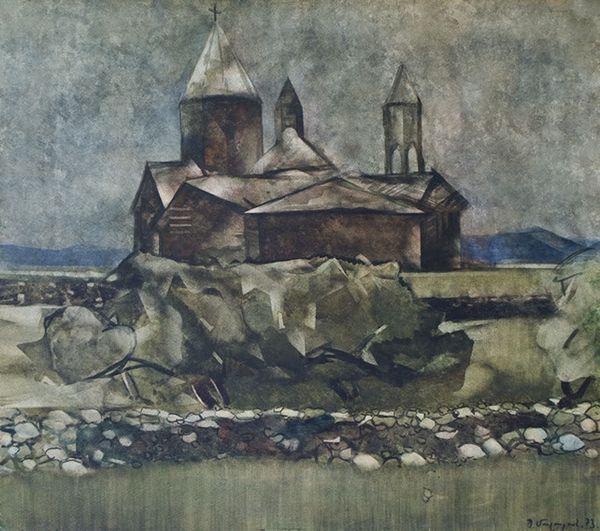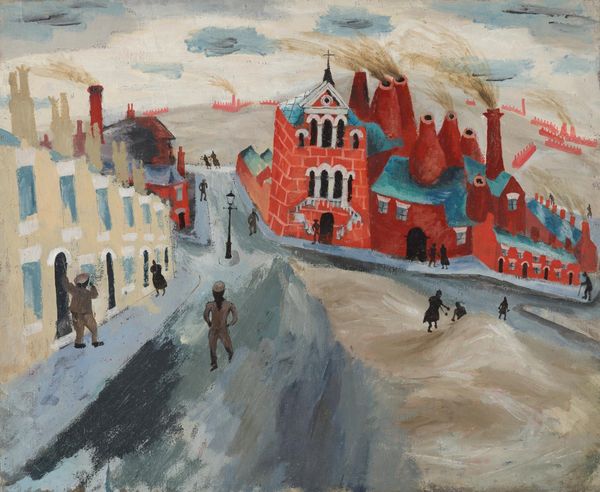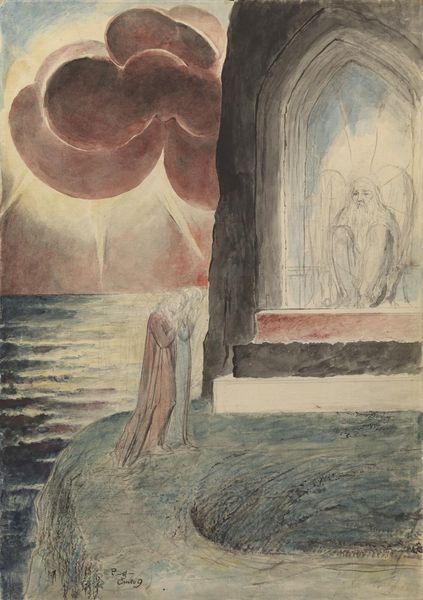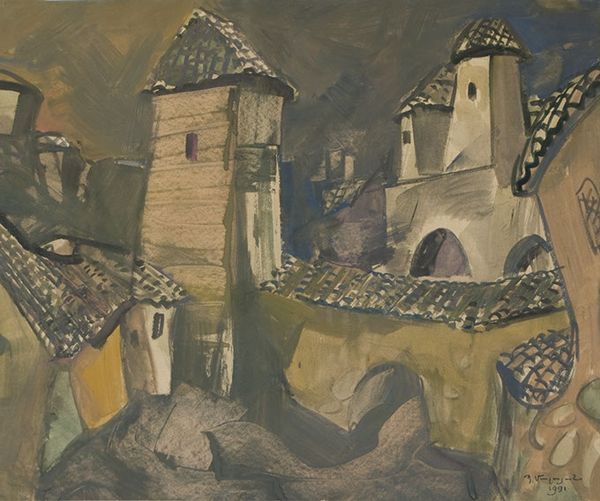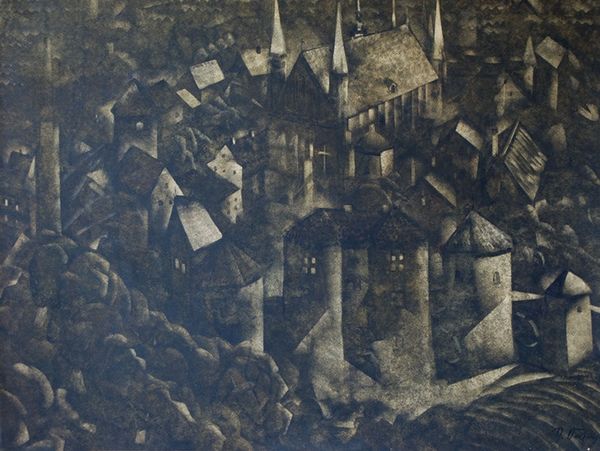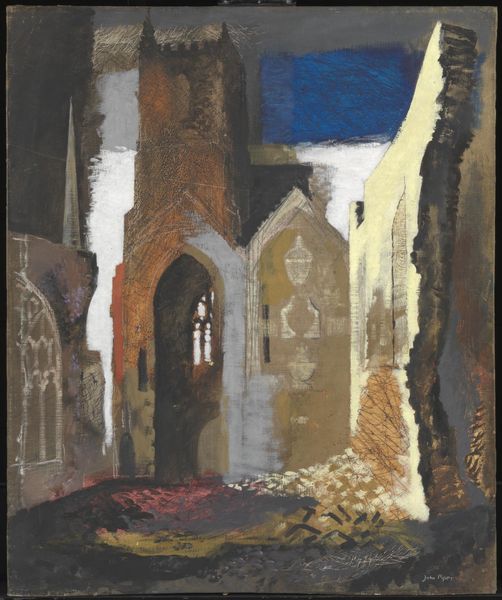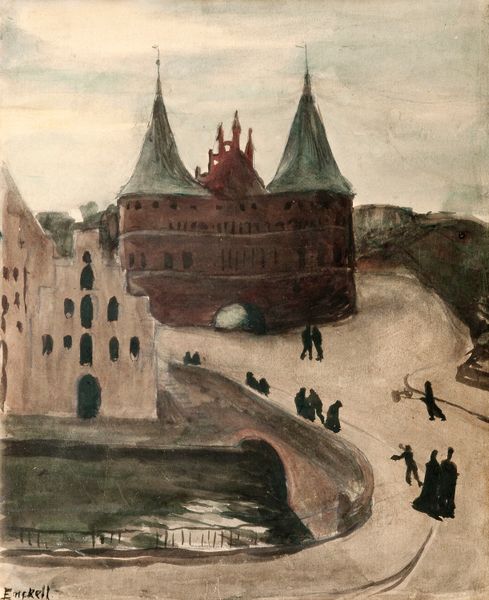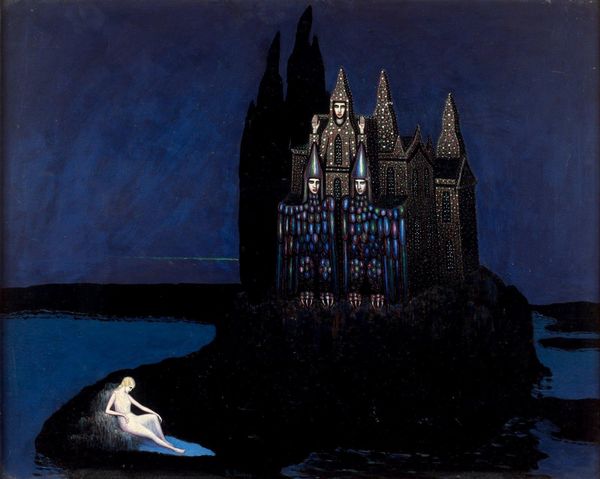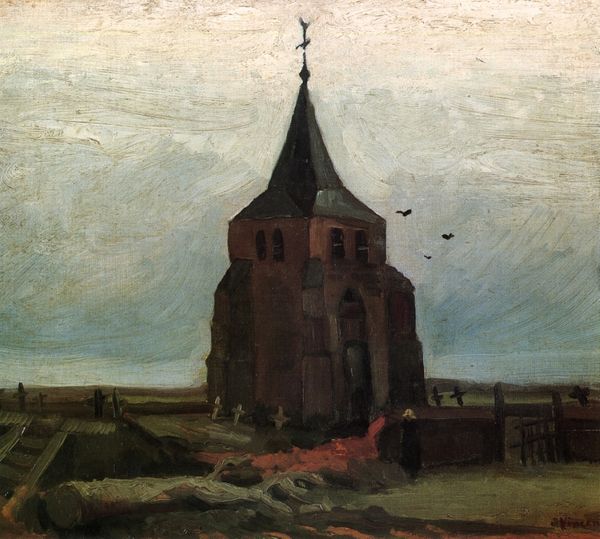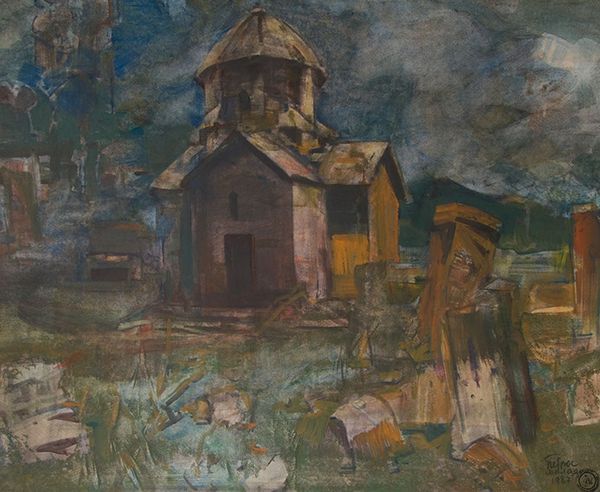
Dimensions: 65 x 54 cm
Copyright: Boleslas Biegas,Fair Use
Curator: Standing before us is Boleslas Biegas' "La Chapelle," painted in 1937. It's an oil on canvas that evokes a rather unsettling aura. Editor: Yes, unsettling is the word! There’s a stark, almost desolate quality to it. The muted colors, the somber sky… It feels like a scene from a dream, or perhaps a nightmare. Curator: Indeed. Biegas was deeply involved with symbolism, and we see it at play here. Notice the architectural shapes of figures flanking the church entrance, rendered in that very stiff, stylized way reminiscent of hieratic traditions in other religions. The church, or "chapelle," appears isolated, perhaps representing spiritual solitude. In thinking about the rise of Fascism during the artwork’s time, do you see something cautionary here? Editor: Absolutely. Those figures have the cold, impenetrable gaze of ancient statues or rulers; these kinds of unyielding shapes and gazes can evoke power and control. Their presence transforms a simple structure into something imposing, even threatening. This frozenness could signal institutional collapse, a cultural ice age of sorts. Curator: Considering the context of 1937, with Europe teetering on the brink of war, this imagery gains additional weight. The monolithic trees looming in the background, almost like dark sentinels, add to that sense of foreboding, of inescapable dread. What interpretations do they bear in this context? Editor: Trees carry connotations of both strength and rootedness, but their almost blackened presence hints at a damaged or suppressed energy. The entire landscape, with its fortress and somber, almost haunted ambiance, speaks to a sense of looming crisis, perhaps mirroring the anxieties of a society facing immense challenges. This contrast of power and suppression offers some complexity that invites ongoing reflection. Curator: Biegas seemed intent on expressing themes of the psyche, the subconscious and spirituality through potent symbolic imagery. Do you sense the success of the composition when the image is interpreted this way? Editor: The symbolism does become a language itself. And in that language the chapel and statuary speaks of power structures while that roiling sky introduces the unknown, something on the verge of happening. I appreciate how its stillness holds those contradictory forces in such taut balance. Curator: For me, viewing Biegas' "La Chapelle" invites reflection on how artists can both tap into and give form to social anxieties and moral decay. Editor: And for me, it confirms the potency of symbolic language to simultaneously communicate vulnerability and strength.
Comments
No comments
Be the first to comment and join the conversation on the ultimate creative platform.
